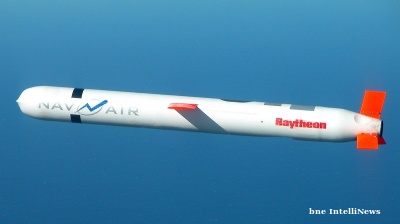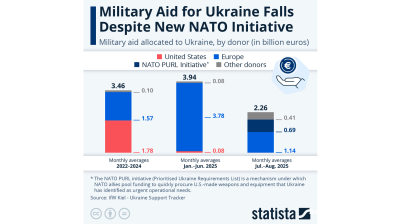Russia’s real estate market is back in play after investment rose by 30% y/y in the first quarter of this year, reports JLL – the best result in the last three years.
Russia’s real estate investment volumes reached $967m in 1Q19, up from the $742m invested in the same period a year earlier.
“A significant investment volume increase at the beginning of the year can be explained by a few large transactions which were postponed from 2018 to 2019. Nevertheless, investors are still cautious and are adopting a ‘wait and see’ approach,” Natalia Tischendorf, head of capital markets, JLL, Russia & CIS, said in a report.
“The market faces a shortage of real estate products available for purchase and, despite the fact that economy and debt market are recovering, and senior debt financing is available at relatively low interest rates, the volume of deals under negotiations has not increased.”

 Warehouse catches the e-commerce wave
Warehouse catches the e-commerce wave
Of all the subsectors in the real estate business the one that has been doing best is warehousing, driven by the vibrant growth of Russia’ e-commerce business.
Online shopping already accounted for 4.5% of Russia's total retail turnover in 2018 and with compound average growth rate (CAGR) of 16% — about ten-times faster than the real economy — the size of the business will double to 8% of retail turnover or RUB3.4 trillion in the next five years, according to VTB Capital.
The vacancy rate in the Moscow region warehouse market declined by 0.3 pp in the first three months of 2019, to 4.2%. The take-up volume in the first quarter of 2019 was 348,000 sqm, of which 60% of the deals were done on the secondary market. And warehouse completions reached 132,000sqm — almost double the level of the first quarter a year earlier.
“On the one hand, the positive quarterly dynamics of the main indicators is a signal of warehouse market recovery. On the other hand, there are a number of economic indicators, such as retail turnover, Purchasing Managers Index (PMI) and economic growth forecast which restrain optimism about the future market prospects,” says Evgeniy Bumagin, head of JLL’s industrial & warehouse department.
Only 60% of total 1Q19 completions, or 75,000 sqm, was available on the open market in the first quarter and an additional 1.1m sq m of new warehouse premises are scheduled for delivery until the year end, according to JLL. If the announced projects are delivered on time, the annual warehouse completions will be 1.4 times higher than those of 2018.
The total modern warehouse stock on the Moscow region warehouse market amounted to 17.9m sqm, of which 755,000 sqm is vacant space.


Office bouncing back from 10 year lows
The most activity has been in the office sector, which received well over a third (38%) of all the investments. There have been a number of large deals as investors speculate the market has bottomed out and take advantage of low prices.
The largest office deal was the sale of B and C class office premises by Alexander Svetakov, the chairman of Absolute Investment Group.
However, the number of new projects coming online is lagging behind demand and that has driven down vacancy rates. Moscow office completions declined 26% y/y in the first quarter. Despite the slight reduction of take-up volume, the vacancy rate continues decreasing towards new lows, according to JLL.
In Moscow’s two key business districts vacancy rates fell further in the first quarter: in the Central business district (CBD) vacancy rates fell from 7.8% to 7.3% over the first quarter and in Moscow City from 7.3% to 7.0%, according to Olesya Dzuba, JLL’s head of research.
That will change this year as 400,000 sqm of new projects are slated to be completed – more than three times as much as the year before, which marked a decade long low of 125,000 sqm of completions.
Still, this year is off to a slow start after only 25,000 sqm of new space was delivered in the first quarter, down by 25% compared to the same period a year earlier, and most of those were Class B.

Residential checked by regulatory uncertainty
The residential sector is also active, although development has been subdued to an extent by the imminent change in regulations that bans pre-selling of apartments to consumers that comes into effect in June.
The residential sector took a quarter (27%) of the total investment and here too there have been a number of big deals. The residential complex Prime Park was bought by A1, the investment arm of Russian oligarch Mikhail Fridman’s Alfa-Group.
Retail growing, but incomes are stagnant
Retail took another fifth (22%) of the total investment where the largest retail deal was the purchase of Nevsky Centre shopping mall in St. Petersburg by PPF Real Estate Russia, owned by Petr Kellner, the richest man in Czechia, who is an active investor into Russian business.
Retail vacancy rates fell to 4.3% in the first quarter, the lowest level in five years, driven down partly by the lack of new projects being completed and the slow growth of the economy. After a flurry of projects coming onto the market in 2014, just before the crisis years started, there has been little new investment. Betweeen 2017 and 2018 there were only eight new retail projects completed, according to JLL, totalling 278,000sqm, which was half the level of new shopping centres coming on the market in the two years before that.
A lack of new supply and a high occupancy rate of new shopping centres have led to the decline in the vacancy rate by 1.7 ppt y/y and 0.8 ppt q/q, JLL said in a report.
“The amount of vacant space has decreased in more than a third of shopping centres over the past year,” says Polina Zhilkina, the head of JLL’s retail advisory. “However, there are projects on the market with considerable higher level of vacancy – about 20-50%, which is caused by drawbacks in location and accessibility, inefficient concepts, or the structure of key tenants.”
However, now the market is picking up again and there has been a total of 320,000 sqm of projects announced for 2019 by developers.
Among new schemes for 2019 are Salaris MFC (110,000 sqm), Ostrov Mechty SC (65,000 sqm), Novaya Riga Outlet Village (38,000 sqm) and several neighbourhood shopping centres that are being built by the ADG Group. Taking into account completions in 2019, the vacancy rate is projected to rise to 5.1% by the end of 2019, according to JLL.

Part of the slowdown has been driven by the changing make up of companies renting retail space. The retail business is becoming progressively more local as many international players have withdrawn from the market.
The number of new international retailers declined significantly in the first quarter, according to JLL, with only four brands entering the Russian market versus ten in the same period a year earlier – the second worst result since 2015 when there were only two new entrants. And as many international brands left the Russian market in the first quarter as entered it. Five years of stagnant real incomes means that Russia’s retail is holding its own but not developing.
Moscow and St Petersburg reign supreme
Moscow remains by far the most important real estate market in Russia, accounting for 77 kopeks out of every ruble invested, and even increased its share in the first quarter of this year from the 68% of the market it held in the same period a year earlier.
St Petersburg is the second most important market and accounted for 23% of Russia’s total investment in the first quarter of this year, up one percentage point from a year earlier. The rest of Russia’s 81 regions barely register in the total investment volumes, collectively accounting for less than one percent.

Features

BEYOND THE BOSPORUS: Investigators feel collar of former Turkish central bank deputy governor
Regime gangs continue to hustle for gains. Some Erdoganist businessmen among the losers.

Journalist beaten to death in Istanbul as security conditions in Turkey rapidly deteriorate
Publisher, meanwhile, is shot in leg. Reporters regularly experience violence, judicial harassment and media lynching.

Agentic AI becomes South Korea’s next big tech battleground
As countries race to define their roles in the AI era, South Korea's tech giants are now embracing “agentic AI”, a next-generation form of AI that acts autonomously to complete goals, not just respond to commands.

Iran's capital Tehran showcases new "Virgin Mary" Metro station
Tehran's new Maryam metro station honours Virgin Mary with architecture blending Armenian and Iranian design elements in new push by Islamic Republic




